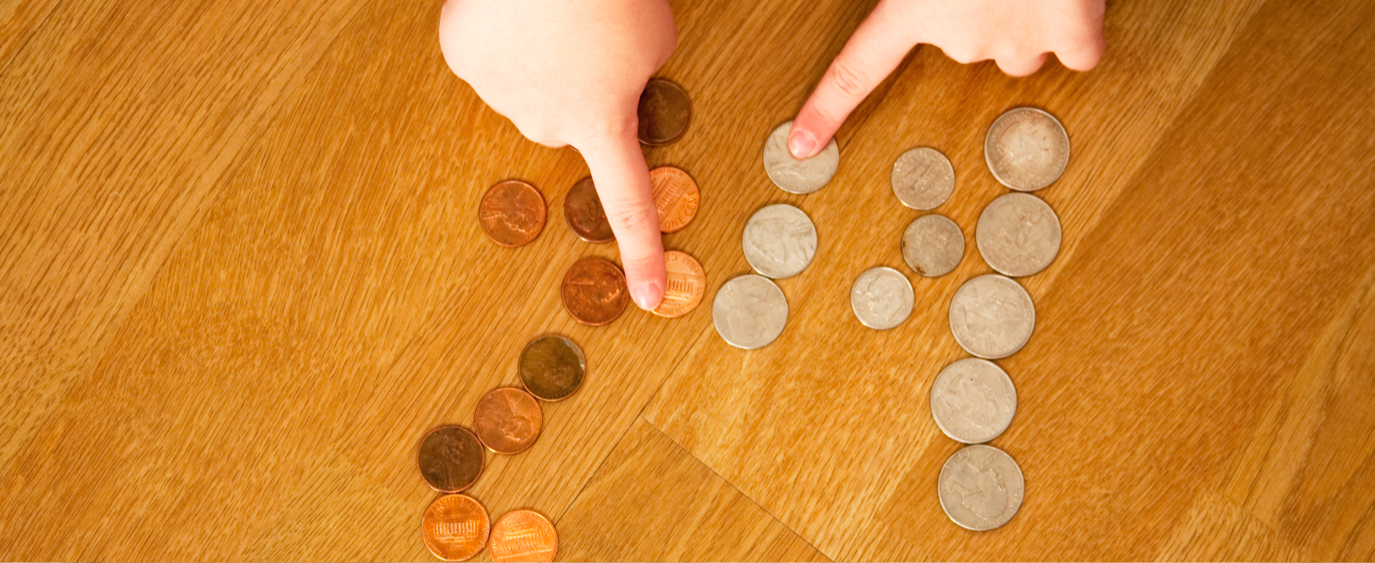Aug 17, 2018
Sorting Coins
Teach your children how to count change

We live in an age when you can pay for even the smallest things with plastic, or online or mobile with a single tap or click.
But cash and coins are still important. And it’s critical for your children to develop numeracy and an understanding of the currency they’ll use in adolescence and as adults.
What is this activity all about?
In “Sorting Coins,” your child will learn to identify the different attributes of each coin—for example, size, color, and value. This activity is intended for pre-K to kindergarten, or students new to identifying U.S. coins.
What will your kids learn?
Having a concrete knowledge of coins and currency is the first step toward understanding spending and saving. Kids will learn the value of each coin and how to count money.
This activity will help your child become more independent in identifying coins and their value. Learning the value of dollars and cents is an important part of being financially literate.
What you need
- Activity page — Download and Print [PDF]
- A variety of coins—pennies, nickels, dimes and quarters
Getting started
- Fold the answer key under the top part of the paper. Pour coins onto the table.
- Encourage your child to look at how the coins are alike and different. Have them look at both sides of the coins. Listen for keywords such as colors, sizes, and images.
- Have the child sort the coins using one of the identified characteristics. Ask them questions like: How many piles did you make? Why? (eg. 4 piles, all different sizes, 2 piles—different colors)
- Continue this activity until you have explored the different attributes of the coins.
- Allow the child to look at the answer key. Add attributes not listed.
Talk to your kids!
It’s important to have a conversation with your children about what they’ve learned. It can help them retain valuable knowledge
- After classifying the coins, have the child describe their reasoning. Assign appropriate vocabulary to the categories (copper, silver, heads, tails, etc.).
- When the child has identified size and color, begin giving the coins the appropriate name. For example, pennies are the only copper coin. A penny is equal to 1¢, and so on.
This activity will help you assess what your child knows and can be repeated later in your child’s discovery until it is a concrete skill.
Related Articles

The 2024 Financial Checklist: A Guide to a Confident New Year

9 Ways to Celebrate Financial Wellness Month

Budgeting for Young Adults: 19 Money Saving Tips for 2024

The Best Personal Finance Books on Money Skills, Investing, and Creating Your Best Life for 2024

What Is a Financial Plan? A Beginner’s Guide to Financial Planning

How to Save Money: 45 Best Ways to Grow Your Savings





